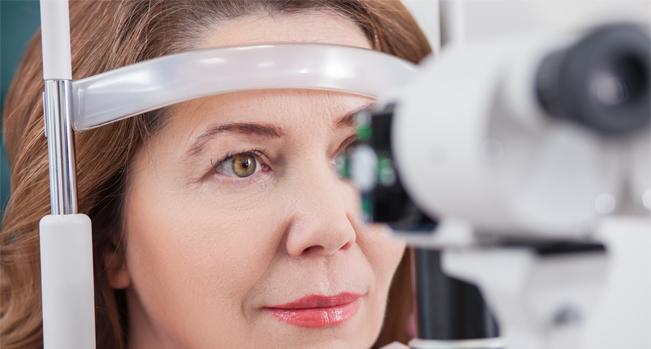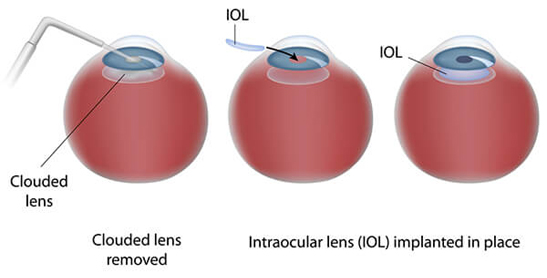
Cataract surgery and Cataract Removal Surgery today is safe, effective and quite common. In fact, if you have been told that you have a cataract, you are definitely not alone. Each year in the United States, more than 2.5 million people have cataract surgery.
Thanks to advanced cataract surgical procedures and lens implant technology, cataract surgery is not only one of the most frequently performed surgical procedures in the United States, but it is also one of the safest and most successful surgical procedures that you can have. Cataract surgery is performed by a cataract specialist on an outpatient basis and usually only requires a few hours of your time from beginning to end.
What are Cataracts & What Causes Cataracts?
A cataract occurs when the normally clear lens of your eye becomes cloudy. This is a result of the proteins in your lens breaking down and clumping together. This clouding of the lens can cause objects and people to be blurry, hazy, or less colorful. This is a natural occurrence that may happen as you age. In fact, more than half of those over 80 years old will either have cataracts or have had cataracts surgery.
Cataracts typically develop slowly and can be managed with stronger lighting and eye glasses. Cataracts that are more developed can make it difficult to perform everyday activities such as reading or driving (especially at night). Once your everyday activities are impaired by your cataract, you should begin to consider cataract surgery, which we talk more about below.
How are Cataracts Diagnosed?
While cataracts are often a result of age-related processes, you can develop cataracts for other reasons. It is possible to develop cataracts from injury or after having another eye surgery. Though, there is no evidence of cataracts spreading from one eye to another.
To receive an official cataracts diagnosis, you will need to make an appointment with your ophthalmologist to have an eye exam. As a part of the exam, the ophthalmologist may administer a dilated eye exam, a slit lamp exam, and refraction and visual acuity test. Once you receive your diagnosis, your doctor will help guide you through your treatment options and discuss if cataract removal surgery is right for you.
How is Cataract Surgery Performed?
Cataract surgery today is quite comfortable. First, the cataract treatment will begin with our cataract specialist treating your eye with an anesthetic so that you will feel little if anything during your surgery and minimal if any discomfort.
Your cataract specialist operates while looking through a highly specialized microscope, designed exclusively for cataract removal. A very small incision, less than 3mm, is made at the edge of the cornea.

Through the tiny incision, a microsurgical, ultrasonic, oscillating probe is inserted, which gently fragments the cloudy lens, using high frequency sound waves. Simultaneously, this same instrument suctions out the fragmented pieces. This process is called “phacoemulsification”. The posterior capsule, an elastic bag-like membrane that held the lens, is left in place.
Once all the minuscule bits of the cataract have been removed, a tiny new clear implant lens is folded, inserted through the small incision, and allowed to open up inside the posterior capsule.
The procedure typically takes 20-30 minutes, and is performed on an outpatient basis by a cataract specialist. This means that you will have the cataract surgery and then go home, usually around 30 minutes afterwards. Most of the time only local anesthesia is used, so you will be awake for the entire cataracts treatment. After the cataract surgery, you are taken to the recovery room and then released. You will need someone to drive you home.











.png)

